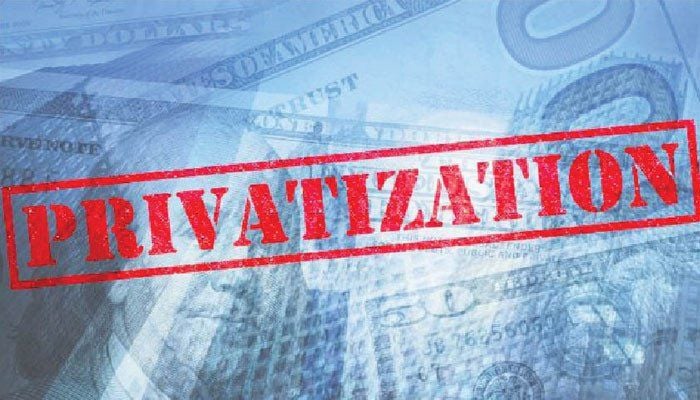Hive off state-owned entities already
Inability of the government to take tough decisions to reduce costs in many SOEs continues to destroy whatever little value is left within these SOEs, writes Ammar Habib Khan
July 29, 2022

Whenever there is any news regarding privatization, suddenly there is always someone who starts a comparison of State Owned Entities (SOE) with the family silver. A previous asset that if sold to the private sector, or foreign investors would rob the country of the family silver. Every few years the same narrative is repeated, inadvertently resulting in the destruction of the value of SOEs across the board.
The current government too has recently been trying to divest some of its shareholdings in some SOEs listed on the stock exchange, mostly in the energy space. Entities such as the Oil & Gas Development Corporation (OGDC) and Pakistan Petroleum Limited (PPL) have seen their market value deteriorate by 38 per cent and 53 per cent respectively during the last three years. Similarly, Pakistan State Oil (PSO) has also seen its market value deteriorate by 10 per cent during the last three years.
During the same time period Sui North Gas Pipeline (SNGP), and Sui South Gas Pipeline (SSGC), have seen their market value deteriorate by 50 per cent and 55 per cent respectively. Even in operations, there has been little to no improvement as Unaccounted For Gas (UFG) continues to be in the high double digits resulting in welfare and economic loss for both consumers, and the government. Pakistan International Airlines (PIA) has a negative net worth and has liabilities exceeding half a trillion rupees, only surviving through piling up of more debt guaranteed by the government. Although some of these entities still post profits, those profits are discounted heavily by investors as the same are not backed by free cash flow, largely due to bloated receivables due from either the government or its associated entities. In such a scenario, the absence of free cash flow is heavily discounted by investors, and that is reflected in the price.
Similarly, electricity distribution companies across the board have massive losses as a function of both higher transmission and distribution losses as well as a bloated cost structure, making them an unattractive asset for any sale. Although we were able to successfully privatize K-Electric, the inability of the buyer to exit the transaction over the last five years increases the overall risk associated with such transactions. Even if there is a willing investor, who would inject capital and can turn around an entity, the highly opaque governance and judicial factors increase the overall risk associated with investing in SOEs, which scares away any serious investor.
In such a scenario, one is hard-pressed to find any SOE which is profitable in a competitive market without any monopolistic market structure or sovereign support. Similarly, it is even more difficult to find willing investors given the high risk associated with operating in an uncertain political and judicial environment. Over the last three years, foreign investors have sold more than $990 million on the stock exchange, signifying the high risk associated with the market. The family silver is now essentially a family liability, and it’s only getting worse.
The destruction in value in the energy space over the years can largely be attributed to the decade and a half-long conundrum of circular debt, which is yet to be resolved. SOEs in the energy value chain are stuck in a liquidity trap, wherein they expect cash from their buyers so that they can pay their suppliers, and since there is a lack of cash liquidity in the system, no one gets paid. Only when the government injects some liquidity in the system does everyone get some cash to run their core operations, or even return some funds to their shareholders, till the liquidity trap closes in again. Similarly, the inability of the government to take tough decisions to rationalize headcount and reduce costs in many SOEs continues to destroy whatever little value is left within SOEs.
The plan of the incumbent government to raise US$ liquidity by selling shareholding in some SOEs makes economic sense. First, it provides precious foreign currency liquidity to shore up our foreign exchange reserves, and smooth out a balance of payments crisis. Second, it has the potential to improve governance of those respective SOEs through induction of a more professional board and fresh thought process which may reform, or restructure some of the SOEs, if not all. Although details are not clear, it is also being reported that the government will also have a buyback clause, wherein it can buy back its shares at a predetermined price after a predefined time period. There is little clarity regarding the deal, but anything that gets the country precious foreign currency liquidity by hiving off shareholding in liquidity-constrained SOEs is worthy of consideration.
The country needs an injection of foreign capital, and more as equity investments, rather than debt. The country needs to make itself a desirable destination for foreign direct investment, as well as portfolio investments. Basking in the reflected glory of earlier successes that are also decades old may not work anymore. The country needs to embark on a growth trajectory underpinned by sticky foreign investment, and the first step towards that is to hive off SOEs before their value deteriorates further.
The writer is an independent macroeconomist.
Originally published in The News









